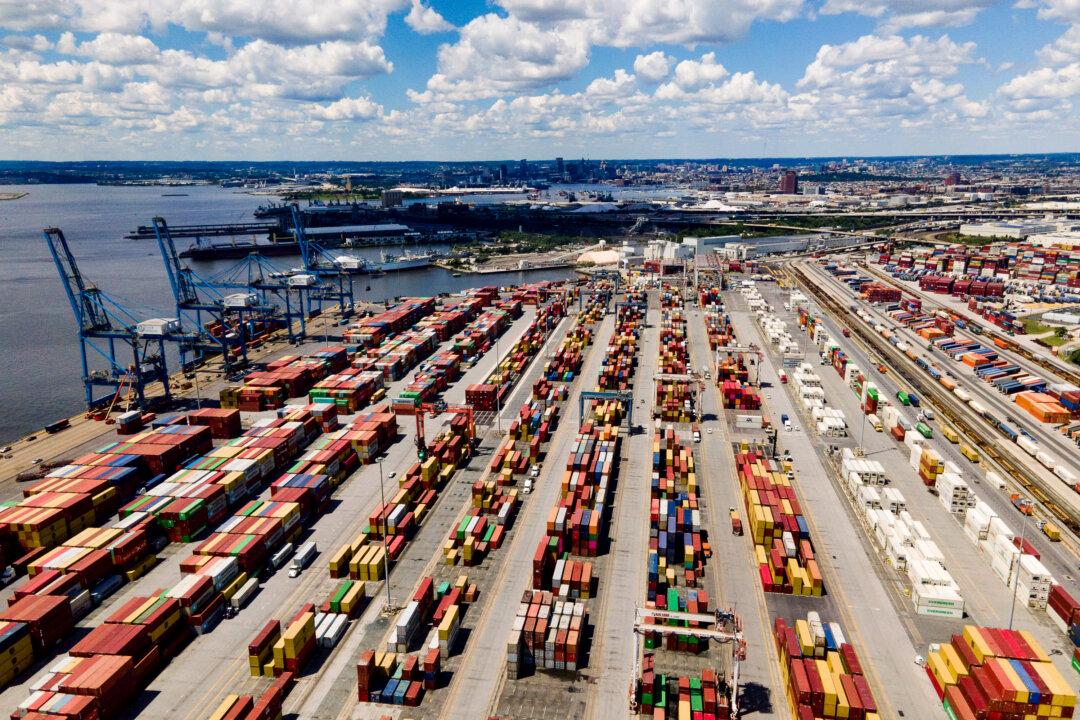President Joe Biden signed an executive order on Feb. 21 that will boost the security of the nation’s ports, alongside a series of additional actions that will “strengthen maritime cybersecurity, fortify our supply chains, and strengthen the United States industrial base,” officials said.
The executive order will grant the U.S. Coast Guard new powers to respond to malicious cyber activity in the nation’s ports and issue basic cybersecurity requirements for transportation vessels and ports ensuring they mitigate cyber conditions that may endanger the safety of a vessel, facility, or harbor.
Port and ship operators will also be required to report cyber incidents, including active incidents, to the Coast Guard under the executive order, and the Coast Guard will be granted authority to control the movement of vessels that present a “known or suspected cyber threat” to U.S. maritime infrastructure and to inspect those vessels.
Many of the announcements under the executive order won’t take effect until after the Coast Guard issues a proposed notice of rulemaking and receives public comments, according to officials.
Chinese Cranes Linked to Security Risks
“The continuity of their operations has a clear and direct impact on the success of our country, our economy, and our national security,” Ms. Neuberger said.Last year, multiple lawmakers, including Rep. Mike Gallagher (R-Wis.), the chairman of the House Select Committee on the Chinese Communist Party, wrote letters to the Homeland Security secretary highlighting the national security risks posed by the widespread use of Chinese cargo cranes at U.S. ports.
Lawmakers specifically pointed to cranes made by Chinese state-owned firm Shanghai Zhenhua Heavy Industries (ZPMC).

Funding for US Port Infrastructure
During the call with reporters ahead of the Feb. 21 White House announcement, Rear Adm. John Vann, commander of the Coast Guard Cyber Command, noted that Chinese-manufactured cranes make up nearly 80 percent of the cranes at U.S. ports, with roughly 200 Chinese-made cranes across the nation, including at regulated facilities.The cranes, he said, could be designed to be controlled, serviced, and programmed from even remote locations, leaving them potentially vulnerable to exploitation.
On the heels of President Biden’s executive order, the Coast Guard is issuing a maritime security directive based on the “prevalence of PRC-manufactured cranes in the U.S. and threatened tolerance related to PRC interest in disrupting U.S. critical infrastructure,” Rear Adm. Vann said, using the abbreviation of China’s official name: the People’s Republic of China.
The directive will establish new cyber requirements on the owners and operators of Chinese-manufactured cranes based in the United States, according to Rear Adm. Vann.
Along with the executive order, the Biden administration will be investing more than $20 billion into U.S. port infrastructure over the next five years through the president’s investing in America agenda, including the Bipartisan Infrastructure Law and the Inflation Reduction Act, according to the White House.
This will aid in bringing domestic onshore manufacturing capacity back to America to provide “safe, secure cranes” to U.S. ports, officials said.
“Most critical infrastructure owners and operators have a list of safety regulations they have to comply with, and we want to ensure that there are similar requirements for cyber when a cyber attack can cause just as much if not more damage than a storm or another physical threat,” Ms. Neuberger said.







